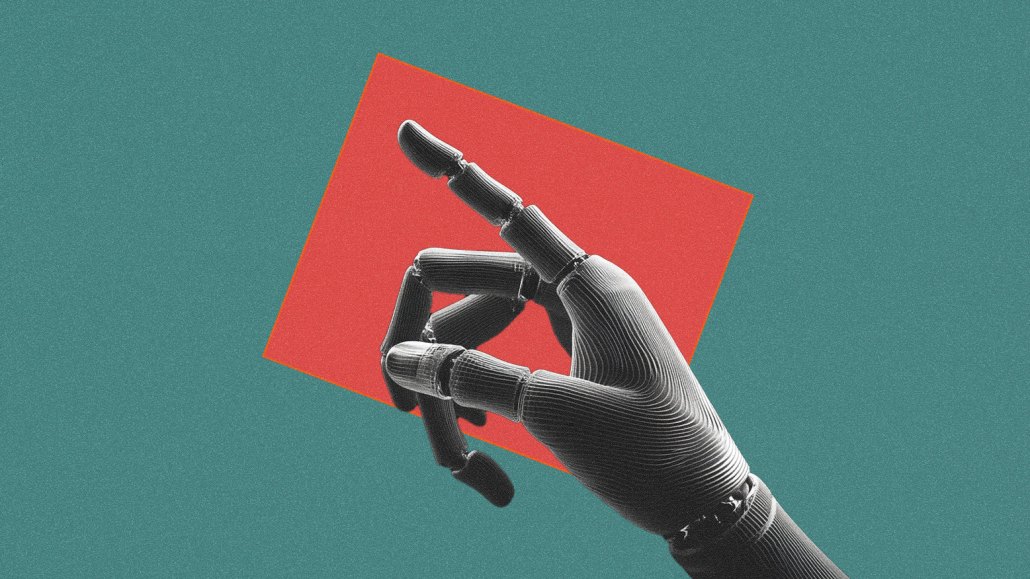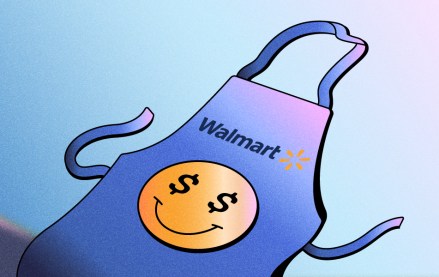Register by Jan 13 to save on passes and connect with marketers from Uber, Bose and more
’The red line keeps moving’: Advertising creatives have lost the AI ick

Ad creatives are becoming more forgiving about the use of generative AI outside the office walls.
Creative agencies used to maintain red lines over AI usage — limiting tools like ChatGPT, Midjourney and Stable Diffusion for repetitive, time-consuming tasks like storyboarding that wouldn’t make it to the TV screen — reserving actual production to people with cameras and clackerboards.
That’s changed in the last year. Hundreds of brands have now released AI ads made from whole cloth for TV and social.
“We have seen a shift in client openness to fully AI developed campaigns,” said Christian Pierre, global chief intelligence officer, Gut. “Generative AI started as an experiment you had to sell in. Today, the client that is not using it feels like they are missing out. It is a 180 degree shift.”
Even a brand like Benetton, which once championed the craft of fashion photography, is now using AI-generated models in its fall/winter campaign.
Audiences don’t seem to mind. A Kantar and Affectiva study published this week compared 356 TV, digital and social ads featuring AI generated visuals, or which had used AI in post-production, with regular non-AI ads.
It found little correlation between AI usage and creative effectiveness. AI-involved ads ranked among the most effective in Kantar’s study for brand recall, and among the worst, suggesting brands aren’t paying an “effectiveness tax” for their usage of the tech, in the words of Věra Šídlová, Kantar’s global creative thought leadership director. In the main, audiences aren’t awed — but they’re not turned off, either.
Clearly, there’s been a shift among both the public, clients and creative practitioners over the use of AI in advertising.
“The narrative that came along with it within the industry was … threatening,” said Dustin Tomes, chief creative officer at TBWA\Chiat\Day.
“My view on AI has changed fundamentally,” said Jon Williams, co-founder and CEO of The Liberty Guild. In September, the company created a campaign for European airline Wizz Air, in conjunction with Monks; gen AI tools were used to produce the TV spot.
‘We didn’t know that could be possible — and be convincing’
Craig Miller, chief creative officer at indie agency Schafer Condon Carter, said he originally greeted the advent of gen AI with mild skepticism. “When I heard about it, my first reaction was [about the] ethical and societal concerns,” Miller told Digiday.
That’s shifted with each new advance and demo, though. And while on location in Santiago, Chile, to shoot an ad for the U.S. Blueberry Council earlier this year, Miller enjoyed a minor epiphany. During filming, the spot’s director, Martin Romanella, suggested adding in a bearded dragon character, to add a moment of humor.
“We were on set so obviously there’s not going to be any lizard wranglers,” Miller recalled. Instead, Romanella used Midjourney to design and create the character there and then added it to the footage they’d shot on site. Following client approval, the bearded dragon made it into the final cut.
“That was really a breakthrough for us because we didn’t know that could really be possible and be convincing. And no one’s commented on it,” he said.
For other creatives, reconciling with gen AI in campaign work has been a gradual process, rather than a road-to-Damascus moment. Full-service agency McKinney, for example, ran its first work featuring gen AI assets earlier this year, in a campaign for Popeye’s.
“It was inevitable at some point,” said Lyle Yetman, chief creative officer at McKinney.
So, what’s behind this change of heart among ad creatives? In part, the economies of scale relating to production have become harder to argue with. Liberty Guild and Monks’ work for Wizz Air wouldn’t have been possible for the time and budget available without gen AI, Williams said. “For my entire career… your ambition was clipped by budget,” he added. “Now, money is not a limit to your creative oeuvre.”
Chief creative officers welcome the notion that junior creatives can reinvest their time away from the Adobe suite, too. “I’d rather have an art director spending time concepting and thinking as opposed to pushing pixels around,” added Miller.
Though some clients still remain wary of the potential legal risks associated with generative AI, it’s become par for the course for agencies to offer indemnification to clients. Meanwhile, agency execs know there will be few job opportunities available for creatives who aren’t open to using the tech.
“If you don’t take that mindset, you’re gonna be left behind, no matter what level you’re at,” said Tomes.
‘Everyone is using it, some more openly than others’
Just last year, the makers of Late Night With The Devil briefly ended up in hot water with film buffs when it emerged they’d used generative AI in some still images. It seems that consumers are likely to care if they discern that gen AI has been used to cut corners, rather than to achieve a heretofore impossible vision.
“We won’t ever use AI if it’s making something that’s cheaper, but not as good as what you could have done [without AI],” said Dave Masterman, executive creative director at VCCP; the agency’s AI-specialist unit Faith has been deploying gen AI tools on campaigns for bubble tea client Gong Cha.
Kantar’s study did show that ads using AI, but which did so in post-production or in a “non-obvious” way, performed better than obvious applications of AI. Kantar’s Šídlová suggested this could be in part due to audiences reacting to the “uncanny valley” effect.
“You don’t want it to be a distraction,” she said.
That consideration might mean we see advertisers in certain categories, like QSR or food, holding back. “I don’t think many people want to see AI food,” said Adam Bodfish, executive creative director at McCann Birmingham.
They might not forever, though. As the cost savings from AI production become more apparent, legal concerns recede and more creative directors make their peace with the tech, agency execs told Digiday we’ll see more and more AI ads in the wild.
“Now, everyone is using it, some more openly than others, and some [are] willing to explore how far they can go with AI,” said Gut’s Pierre. “The red line keeps moving.”
More in Marketing

Inside the brand and agency scramble for first-party data in the AI era
Brands are moving faster to own first-party data as AI and privacy changes alter the digital advertising landscape.

Walmart Connect takes a play out of the Amazon playbook to make agentic AI the next battleground in retail media
The next retail media war is between Walmart Connect’s Sparky and Amazon’s Rufus, driven by agentic AI and first-party data.

What does media spend look like for 2026? It could be worse — and it might be
Forecasts for 2026 media spend range from 6.6% on the lower end to over 10% but the primary beneficiaries will be commerce, social and search.








